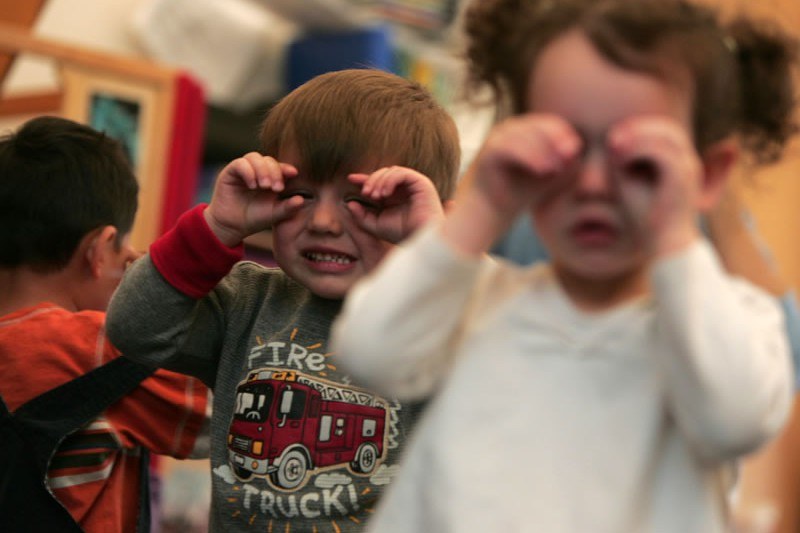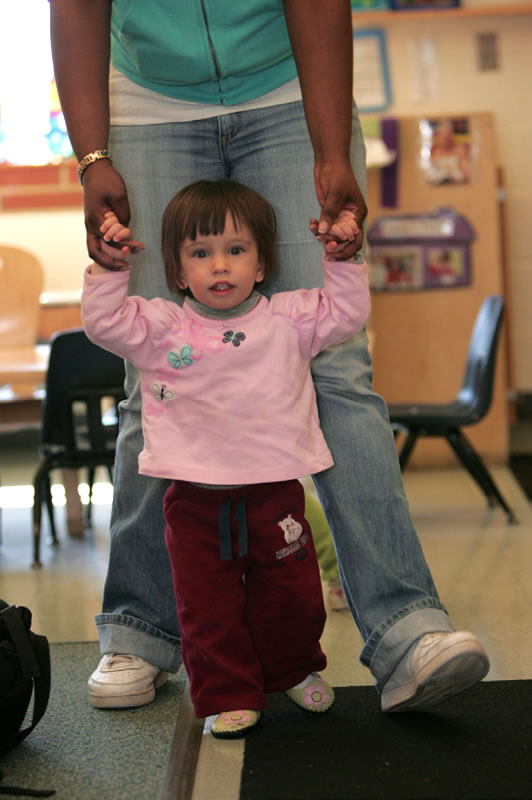Approaches. Why and how children learn through movement activities. Research tells us that from birth to age six there is important learning happening. One important way children explore and learn about their world is through physical movement.

Natural explorations
Movement is a way for children to express themselves, particularly if they have not yet fully developed verbal language. As educators, we need to not only support movement as a learning tool, but embrace it. This may mean letting go of some old ideas, such as the idea that sitting still all the time is a good way to learn.
As Janet Eilber, Advisor for Arts Education in the News, states, "Early learning is all experiential ... We learn to move through and communicate with the world by using the basic elements of creativity: curiosity, observation, experimentation, translation, communication. No wonder 'sitting still and being quiet' is so difficult and discouraging for many young learners. We are being asked to abandon approaches to learning with which we have had great success."
Natural movements
Children enjoy activities that involve the senses and movement; they are natural explorations and they are fun! As a result, children are more attentive and engaged, which can heighten the learning experience at hand. In addition, physical activity simply makes children feel good. Feeling good helps children with learning, self-confidence, and an overall positive outlook.
 Support children's complex developmental skills by rethinking your day's activities to include more plans for physical movement and dance, such as the following:
Support children's complex developmental skills by rethinking your day's activities to include more plans for physical movement and dance, such as the following:
- Use dance and movement for transition times - Dance like a ballerina to the bathroom, dance like slithering snakes to the coat cubby, etc.
- Use movements to tell a story - When telling stories, use physical actions and encourage the children to act out the story with you.
- Provide meaningful chores for children that include dance-like movements - sweep the floor, take out the garbage, weed the gardens, and of course, clean up the toys.
- Sound out the dance - Move with things that make sound, such as Velcro bands of bells attached to wrists and ankles (uses multi-sensory actions) or shaker-type instruments. Try taping flat, metal lids (recycled from juice cans, etc.) to the bottom of shoes for fun tap dance sounds.
- Dance and draw - Twirl streamers to make shapes and letters. Show drawings and pictures of shapes for children to look at first and then make with their bodies.
When children start displaying lots of movement, rather than telling them to "stop", recognize their need to move and adapt the experience to include movement.
References:
-
Eilber, Janet. November 19, 2007. A Child's First Method of Learning is Still the Best, The Dana Foundation. Retrieved 1/30/2009
-
Grafton, Scott, M.D., and Cross, Emily, M.S. March 2008. Dance and the Brain, The Dana Foundation. Retrieved 1/30/2009
-
Sousa, David A. How the arts develop the young brain: Neuroscience research is revealing impressive impact of arts instruction on students' cognitive, social and emotional development, School Administrator. Retrieved 2/4/2009
Tips 12-5

